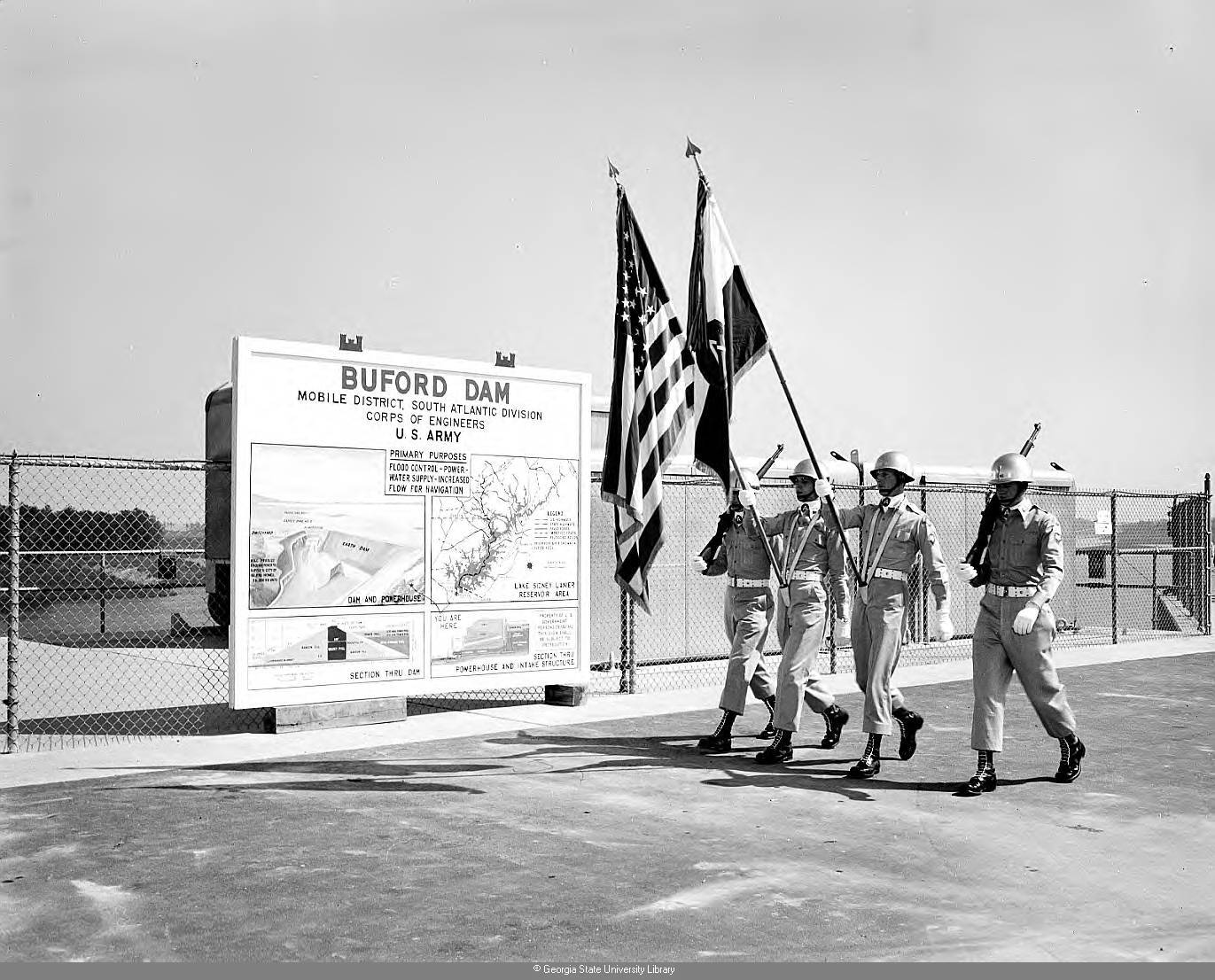
Lake Lanier is a popular weekend destination suitable for fishing, boating, and sun-tanning, but its existence lends itself to a history of state-sanctioned theft. Despite many instances of accidental drownings, the lake remains a top vacation spot for locals.
Named after Sidney Lanier, a poet and Confederate army veteran, Lake Lanier resides in North Georgia between Gainesville and Buford.
Before its completion in 1956, beneath Lake Lanier were several small towns once occupied by farmers. One of the more well-known towns absorbed by the lake is Oscarville. Although portions of old Oscarville, Georgia, still live on the map, the original city survived through lore. Written and oral history did not give the other towns purchased by the state the same grace, and they remain unknown.
Oscarville, located north of the perimeter in Forsyth county, began as a small rural town in 1870. The town was an agricultural marvel because local farmers fought off the boll weevil infestation that tormented Georgia from 1915 to the 1990s and survived the Great Depression.
In 1940, Oscarville resident Clarence Waldrip detailed in the Atlanta Journal how other farmers in the area replaced cotton with chickens to replenish the soil. The farmers did so by using chicken feces and financially recuperated from the boll weevil infestation. Unfortunately, Oscarville’s status as a farming town made it easier for Atlanta to claim the land with the mayor’s help.
Mayor William B. Hartsfield, the partial namesake of Hartsfield-Jackson Atlanta International Airport, sought to propel Atlanta into the new age by expanding Atlanta and minimizing urban areas that neighbored the city. As Atlanta grew, so did its need for power, water and to diminish the floods that plagued the city.
In April of 1947, the Industrial Bureau met with the Chamber of Commerce and decided to greenlight the Buford Dam’s construction. The dam would provide resources to Atlanta and strengthen commerce.
Over two years, Newport Dam Development kept in touch with the court system to ensure the state could seize land from Oscarville residents. They asked all but five residents to forfeit their land to build the Buford Dam. The $1 billion project took four years to complete.
After Lake Lanier first filled in 1959, old Oscarville became virtually non-existent, solely living through old newspaper articles and ghost stories.
Patrick Phillips’ 2016 book, “Blood at the Root: A Racial Cleansing in America,” sparked a newfound interest in the long-forgotten Oscarville. Phillips detailed the 1912 lynchings and subsequent riots that began with the sexual assault and murder of a young White woman named Sleety Mae Crow.
Out of fear, roughly 1,100 Black residents fled Oscarville and Forsyth county to escape racialized violence. Despite the town’s agricultural accomplishments, this is the story that defines Oscarville.
With whispers of ghosts and curses, Georgians find Lake Lanier’s position above several old towns to blame for many visitors’ deaths.
Since 1994, nearly 200 people have died at Lake Lanier. Although the lake is 152-feet deep at its lowest point, underwater forests with trees as tall as 60 feet rest at the bottom. The trees, remaining chicken coops, building foundations and cemeteries make it challenging to dredge Lake Lanier for bodies.
